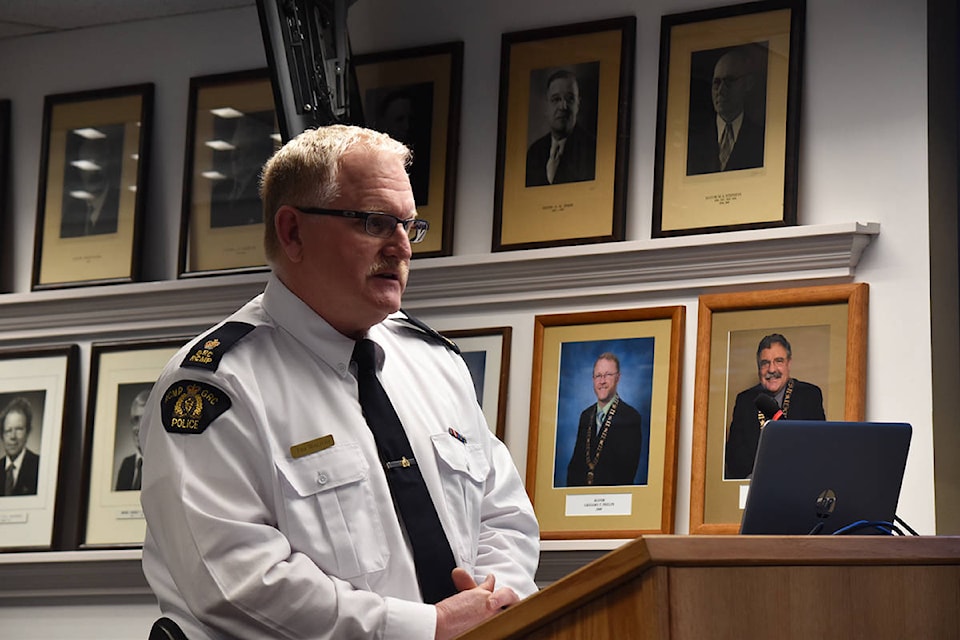The Comox Valley RCMP is requesting a staffing increase to handle an increased number of service calls in Courtenay.
Tim Walton, inspector for the Comox Valley RCMP detachment, presented the request to Courtenay city council on Feb. 19. The detachment is calling for four constables and one support staff member to be added to help handle Courtenay’s growing crime, population, and other factors.
The five new positions’ salaries would equal $730,800 per year.
Walton said the last RCMP staffing increase was approved in 2011, and before that, in 2008.
“I’m trying to re-balance the equation here in the Valley between those who use the services and those who pay for the services,” he said. “Right now, the studies are showing that Courtenay uses more policing services than they’re paying for on the general duty side of the house.”
Walton cited statistics that show Courtenay accounts for 58 per cent of policing files and 51 per cent of general duty policing time in the Comox Valley, but the City pays for only 32 per cent (10) of the detachment’s 26 constables.
He said Courtenay’s constables have the fifth highest workload per RCMP member for municipalities of its size in B.C., but the City’s policing costs were among the cheapest per person in the province.
Walton also presented a table that showed calls for service in Courtenay have increased 35 per cent per year since 2007.
“The tax base is here, the central business district is here, and we have a net increase of about 5,000 people coming to work in Courtenay [every day],” he said.
“The Crime Severity Index is higher in Courtenay. More severe crime requires more resources, more time, and more money to investigate. It also requires specialists,” he added.
Response from council
Most council members did not appear enthusiastic about the staffing increase request.
A few suggested that just because crime is higher in Courtenay does not mean that it’s a local problem and that the City is already paying its fair share for policing services.
“We’re asked yearly about [staffing] increases. We’re looking at our numbers and seeing that we have been generous compared to our neighbouring communities,” said Coun. Manno Theos. “The Regional District, Cumberland, and Comox combined have provided very little extra support.”
Coun. Erik Eriksson, likewise, brought up that crimes in Courtenay could be committed by people from other areas of the Valley.
Walton responded that he “can’t argue anything outside the existing model.”
Under the RCMP model, municipalities of between 5,000 and 15,000 people pay for 70 per cent of policing services, while the federal government pays for 30 per cent. In cities or towns with more than 15,000 people, that ratio becomes 90–10.
Mayor Larry Jangula, who is a former RCMP officer, agreed with Eriksson and Theos that there is a disparity between what Courtenay residents pay for policing versus other Comox Valley residents.
“When you look at what each individual pays for policing, someone in the city is paying over $200 for the same policing that in Comox, you pay $94 for, and if you live in the rural areas, you pay under $50 for, and you get the same level of service,” he said. “Yes, if you live in a rural area, it’s going to take longer for a police officer to get to where you are. But the service you get is the same.”
When asked what he thought council’s decision would be, Walton replied that “I didn’t expect anyone to write me a cheque on the spot.”
“It’s now for the council to decide what they can afford and what level of policing they want,” he said.
